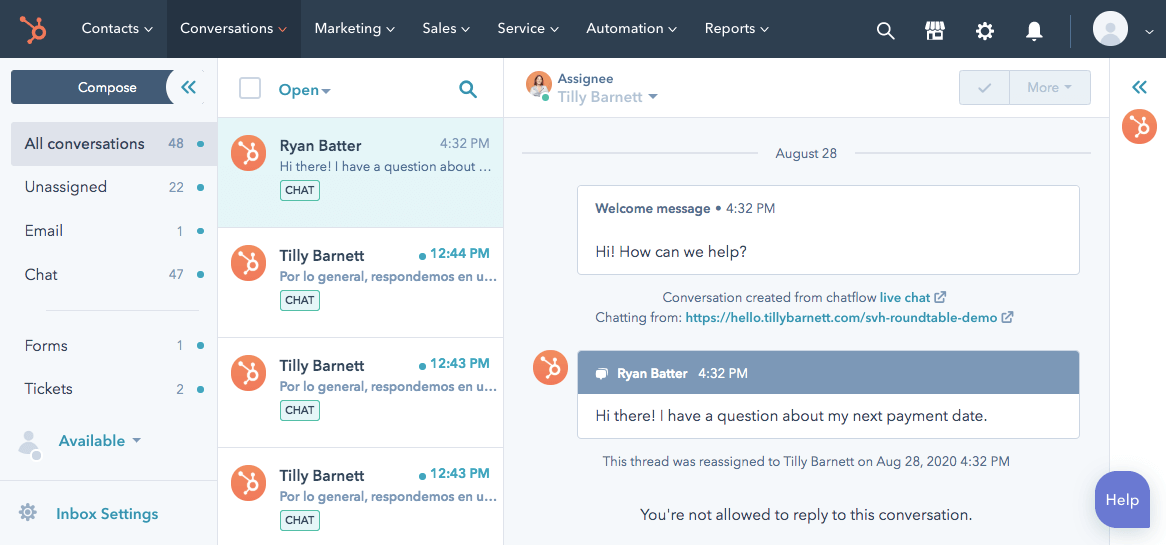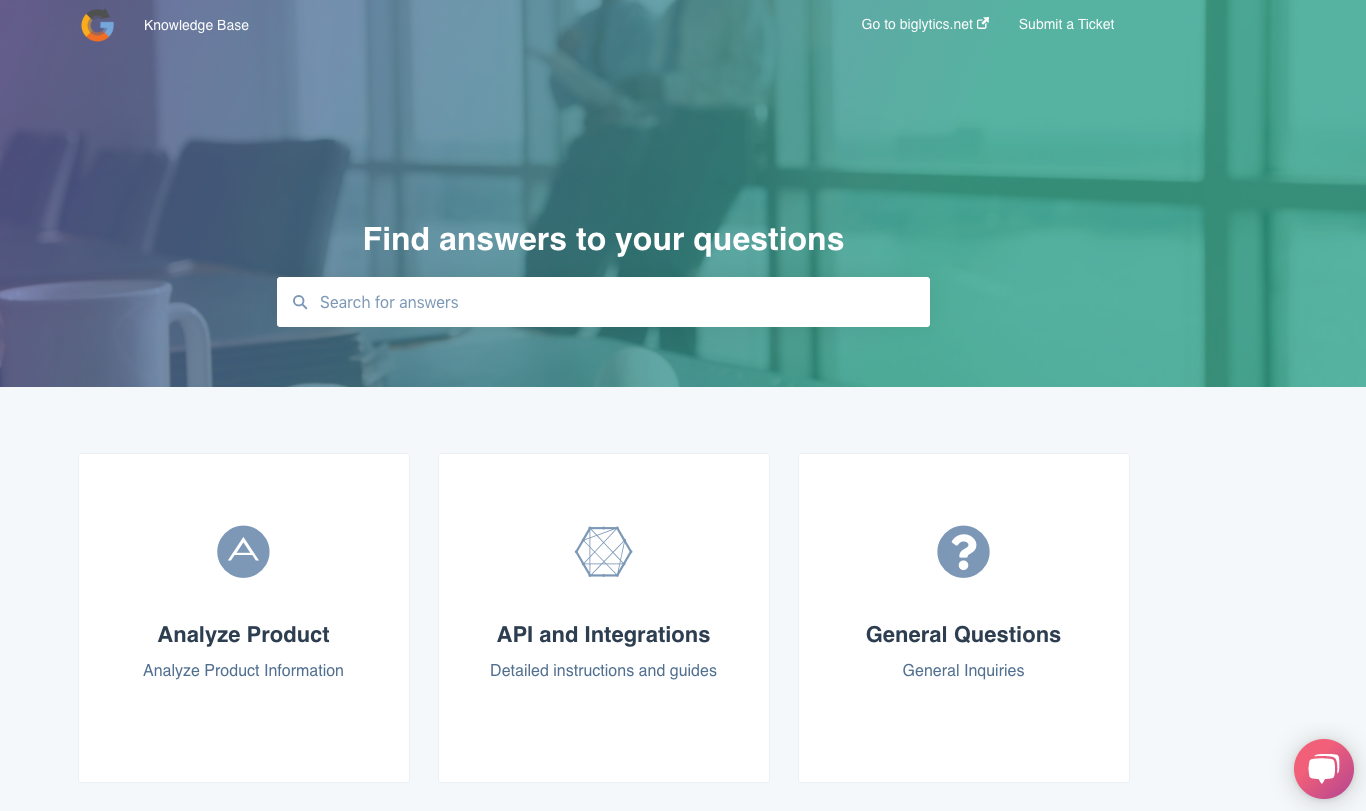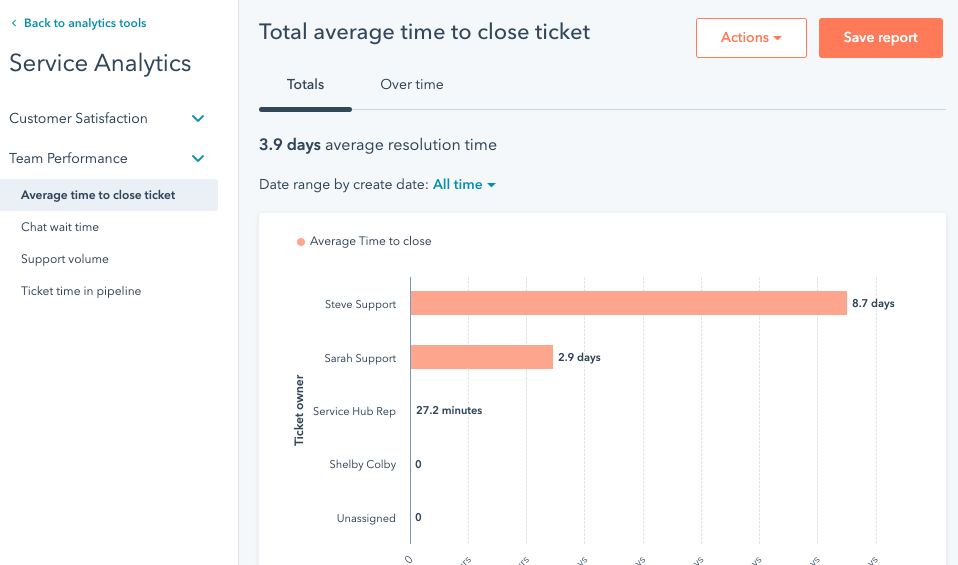Sales, marketing and service alignment? No, you're not dreaming
Smarketing — the combination of sales and marketing — has become an important way for companies to get better results from their marketing and sales efforts. But have you ever thought about what may happen when you throw service into the mix?
The HubSpot platform, Service Hub, is a powerful customer service platform focused on creating a better customer experience by closing the lead lifecycle loop. It offers an array of features that make it easy to manage customer communications and provide fast, effective customer support.
Here are just a few benefits that the Service Hubspot platform provides:
HubSpot Service Hub: The benefits
Improved customer satisfaction
Centralised customer data is a critical aspect of effective customer service and support. Service Hub provides a single platform where all customer interactions can be recorded and tracked, giving your team a complete view of the customer journey.
This includes interactions through emails, phone calls, chat and social media, ensuring no information is missed or overlooked.
Having this information in one place, instead of separate sales and marketing systems, makes it easy for the right person in your team to access and respond to customer enquiries in a timely manner.
For example, messages from chatbots typically reach the sales team, but most messages are better suited for the service and support team. If everyone has access to these messages on the same platform, it saves time and energy for the sales team to focus on actual sales leads instead of support inquiries.
The support team will have all the context they need to serve the customer better, since they can see all the context of the enquiry.
Service Hub includes several key features that help your team to provide fast, effective and personalised customer support, such as:
Ticket tracking — Allows your team to keep track of customer enquiries and ensures they’re being addressed on time.
Automated workflows — Streamlines the support process, enabling your team to respond to customer enquiries more efficiently.
Personalised templates — Provides a consistent and professional approach to customer interactions, allowing your team to provide fast and effective support.
Knowledge base — A single platform that contains all customer support information so customers can quickly find answers to the most common questions.
Omni-Channel messaging — Allows you to connect with customers across multiple channels so you can communicate with them wherever they prefer and still have all of their communications gathered in one platform.
<Credit: HubSpot>
Increased productivity
Thanks to the key features listed above (automated workflows, ticket tracking, personalised templates, knowledge base and omni-channel messaging), the support process is streamlined, reducing the time and effort required to respond to customer queries. Not only does this benefit the customer, but it also benefits your team since they can handle more support requests in less time, resulting in increased productivity.
A key feature of ticket tracking is tracking common enquiries and developing tactics to answer these questions automatically, such as incorporating the answers into your FAQs. Again, this saves time answering the same questions repeatedly, leaving more time for other issues.
Reporting and analytics
The reporting and analytics feature allows businesses to monitor key performance metrics such as response times, resolution times and customer satisfaction rates. This information can be used to optimise processes, identify areas for improvement and measure the success of customer service efforts.
Some of the built-in reports include:
- Average time to close tickets
- Chat wait time
- Support volume
- Ticket time in pipeline
These reports give you a quick overview of your team’s performance so you know who is performing well and who needs extra guidance and attention.
<Credit: HubSpot>
Tying it all together: Marketing, sales and service
Sales, marketing, and service departments play a crucial role in driving a company's growth by increasing leads and revenue.
The sales department is responsible for generating leads by reaching out to potential customers and converting them into paying customers.
The marketing department, on the other hand, creates awareness of the company's products and services through various channels, such as advertising, public relations, and events. They help attract and engage potential customers, providing the sales team with a pool of leads to work with.
The service department is crucial in retaining customers and ensuring their satisfaction. By providing prompt and effective customer service, the service department helps to foster customer loyalty and increase the likelihood of repeat business. This, in turn, leads to increased revenue for the company.
All three departments work together to create a seamless customer experience, from the initial introduction to the company to the post-sales follow-up. Marketing campaigns and initiatives can generate leads, which the sales team can then follow up on and close deals with. The service team can then ensure that customers are satisfied with their purchase and continue to do business with the company in the future.
When all departments are aligned and working together, they can create a positive impact on the company's bottom line by driving leads and revenue.
Try Service Hub today
Service Hub’s features help you provide a faster, better and more consistent service, which ultimately means happier customers.
If you want to learn about even more benefits of the HubSpot platform, Service Hub, get in touch with us today, and we’d be happy to discuss them with you.
Real Growth. Real Impact.
Unveiling HubSpot's latest addition: The Content Hub
Why HubSpot Service Hub?
Keeping customers happy with HubSpot: Your Service Hub toolkit
Building a HubSpot web page with saved sections
3 signs that you need help to facilitate your change process
Change must be led with people first
How to start developing your marketing department’s digital maturity
See why enterprises choose Avidly
Let’s build your HubSpot success story
Compelling final call to action - with accompanying link to Contact page












